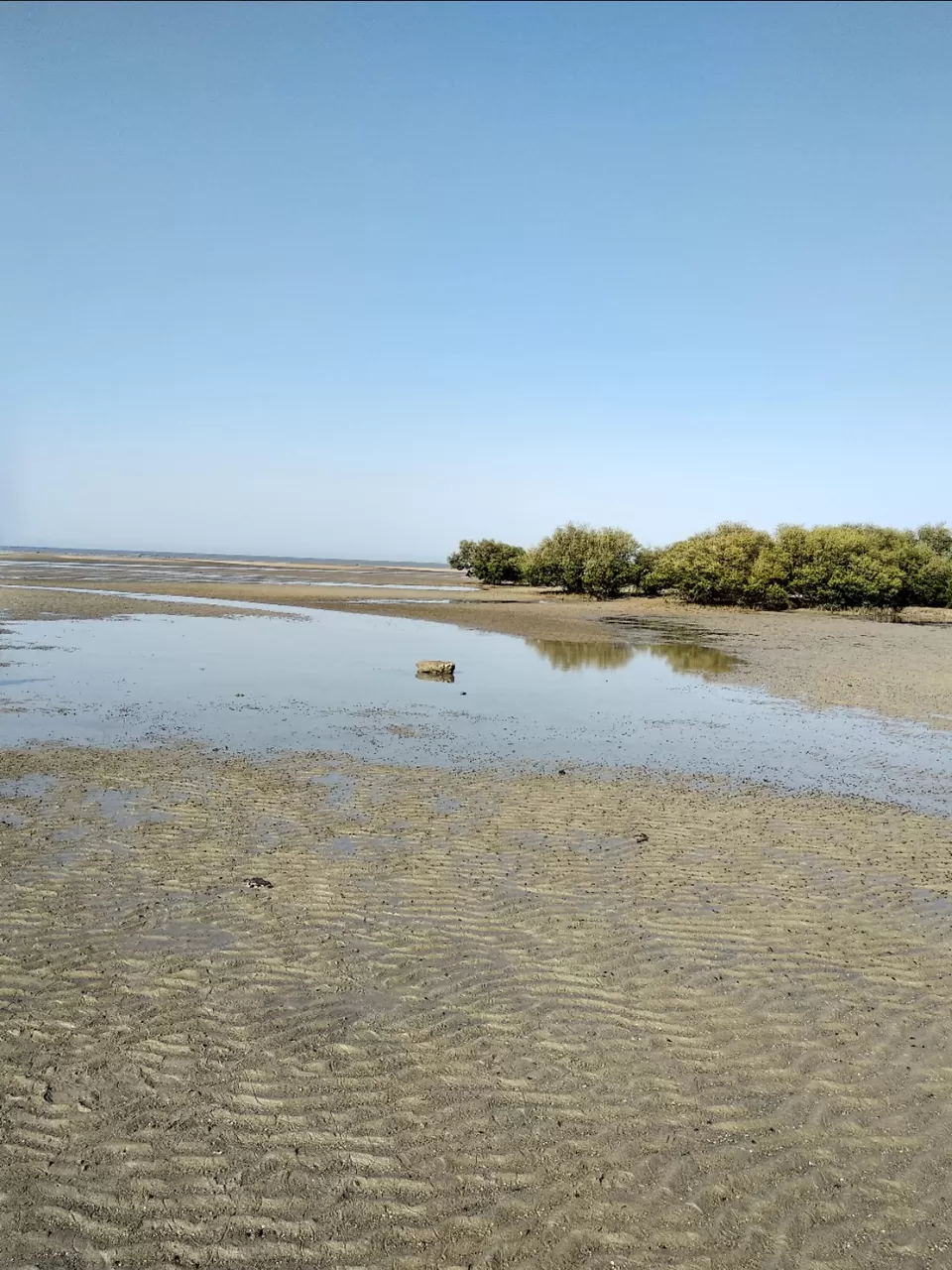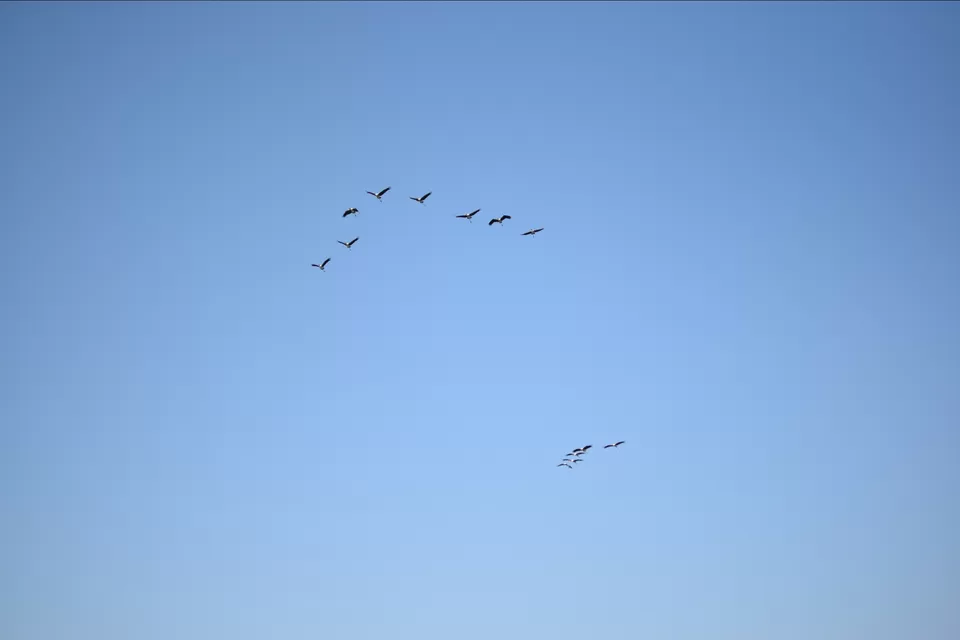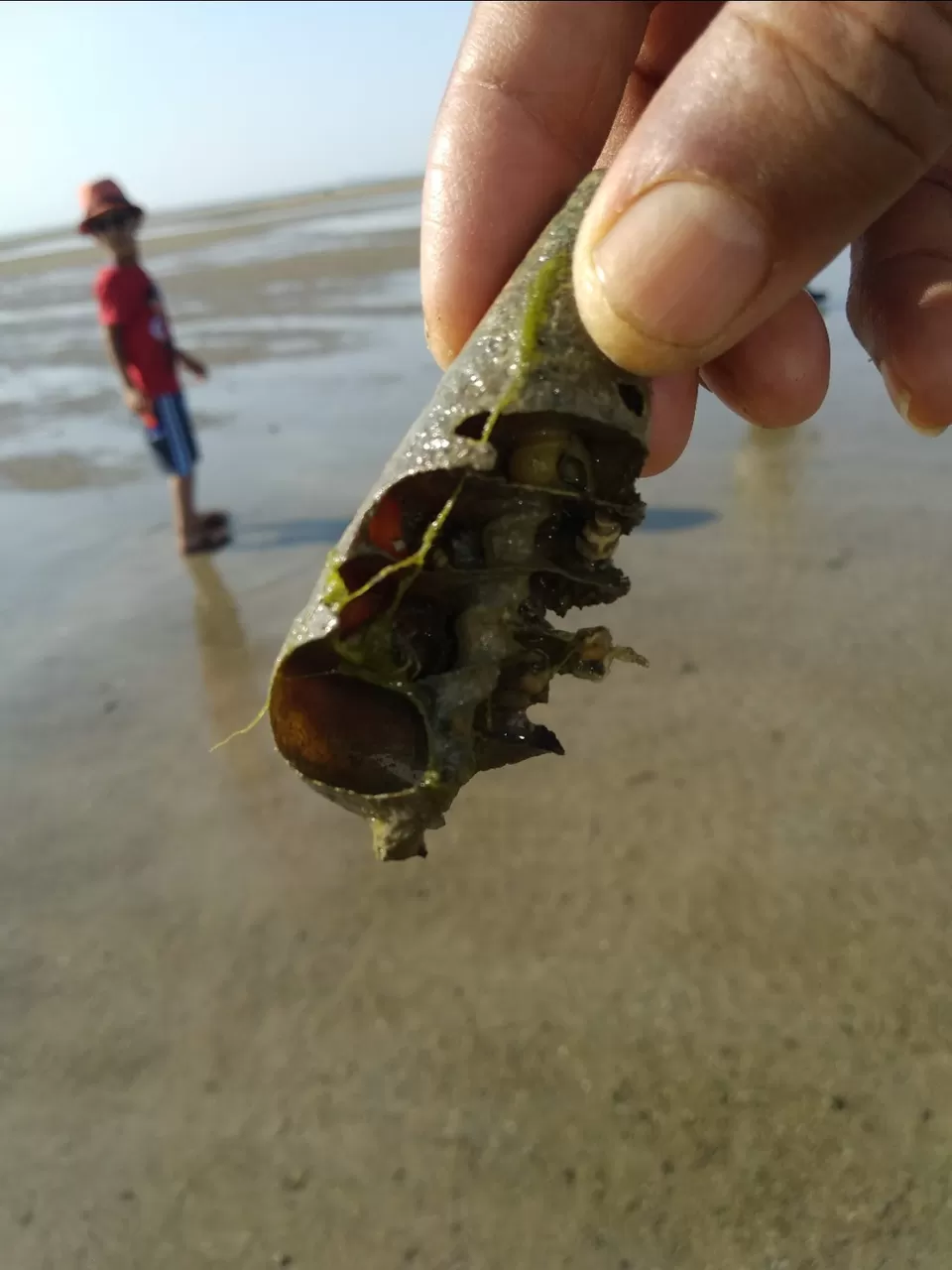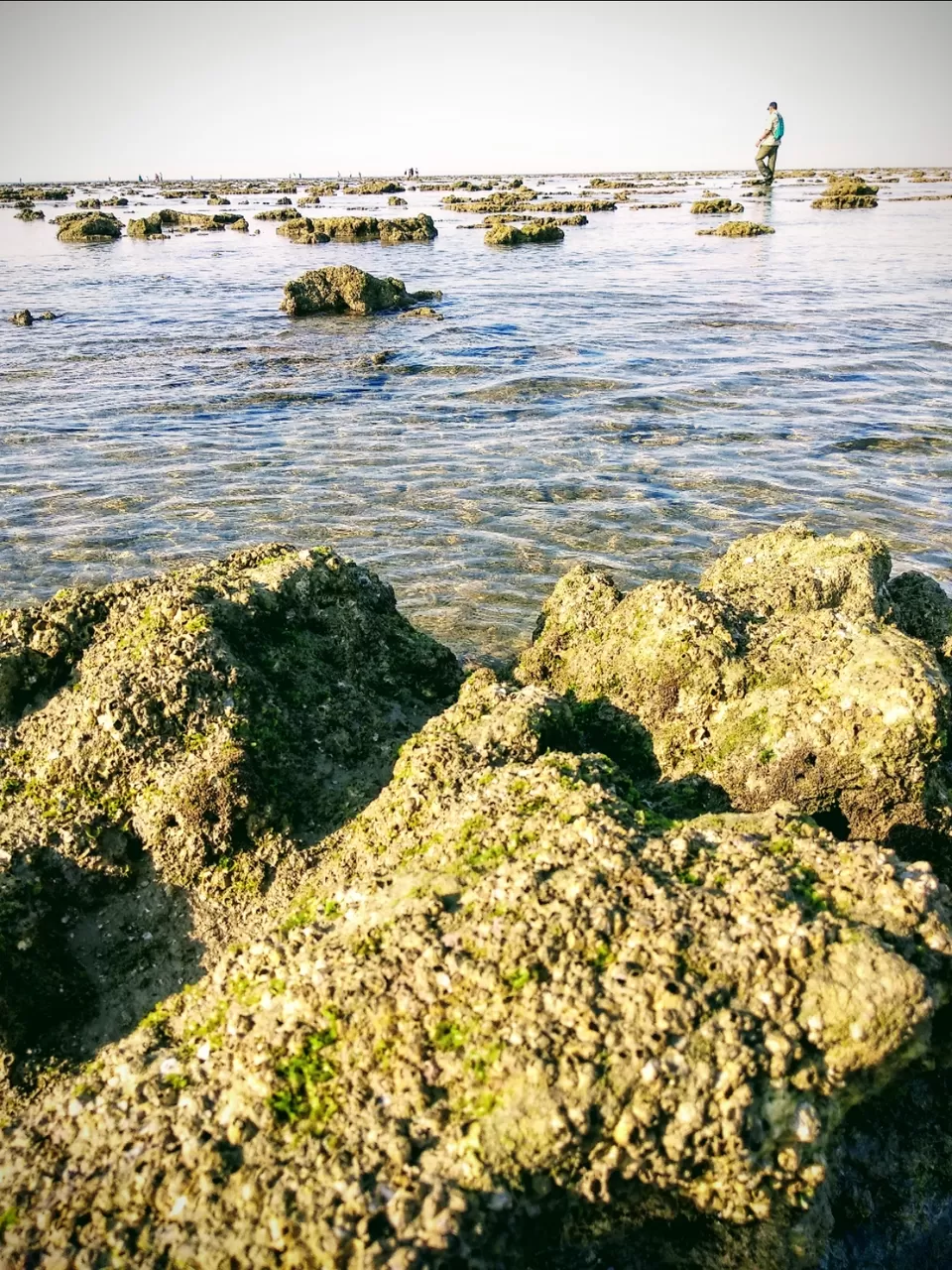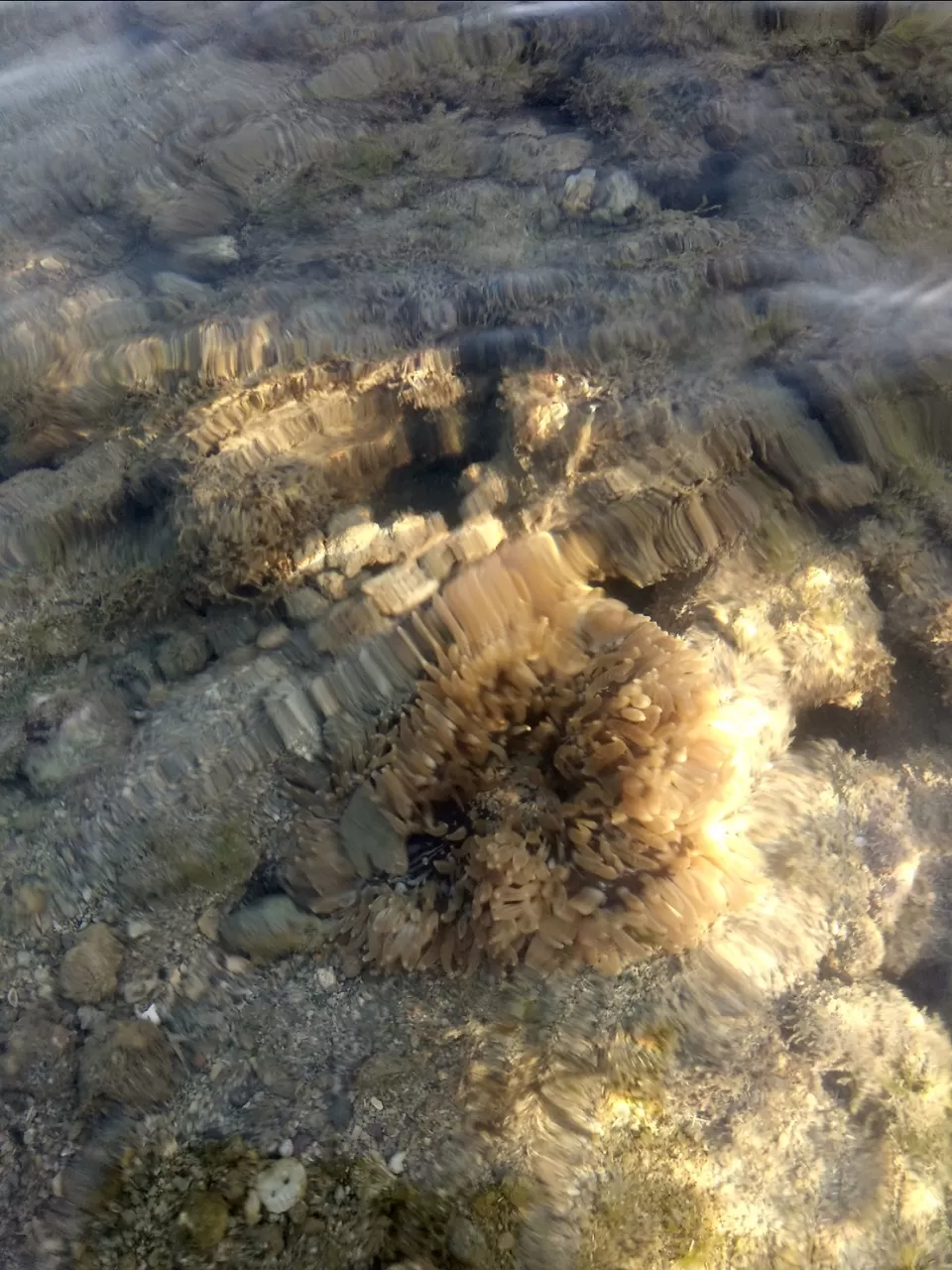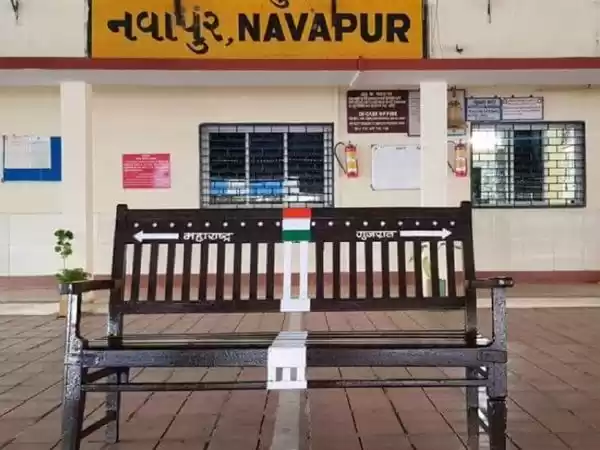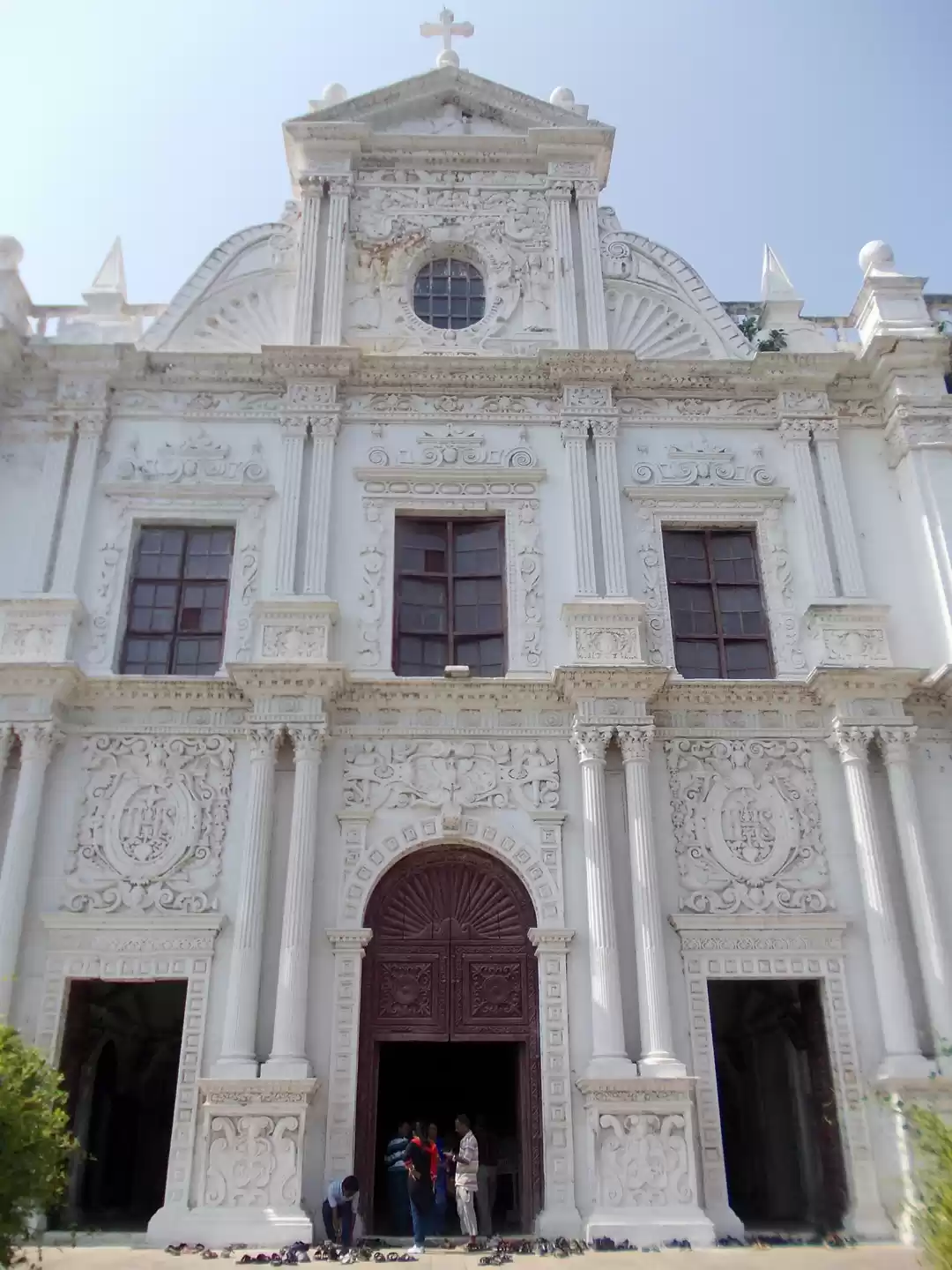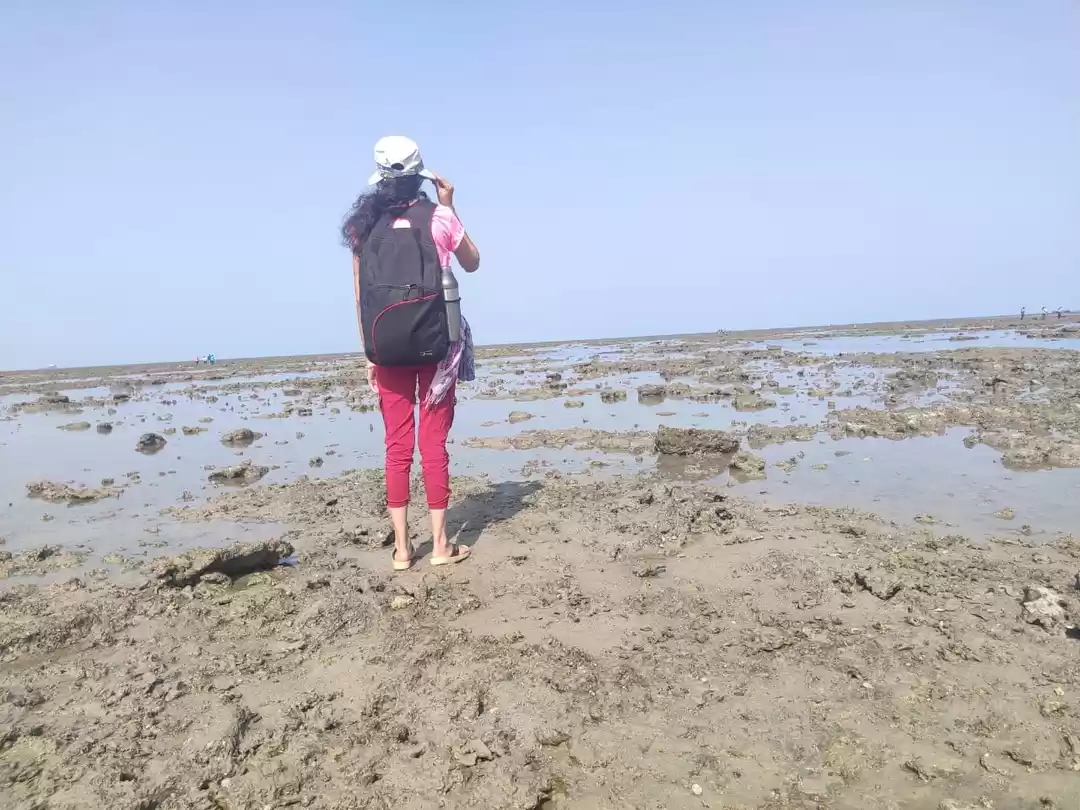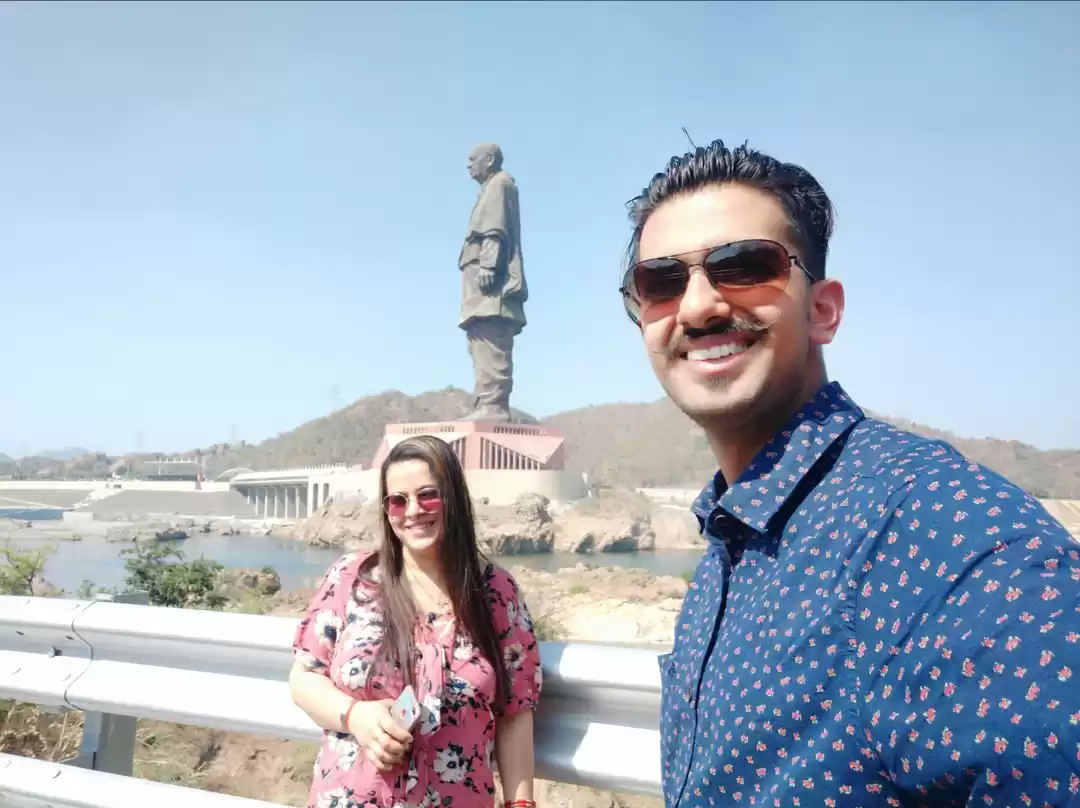
Gujarat is one of the 29 states in INDIA, which is located on the western coast of INDIA and shares a part of it's boundary with Pakistan. I was quite excited to explore what Gujarat had in store for me. So, I simply packed my bags and set off.
I had taken a direct flight in the noon from Netaji Subhash Chandra Bose International Airport, Kolkata at 12:50 pm and landed at Ahmedabad at around 03:30 pm. As my first destination was Jamnagar, I then took a cab from Sardar Vallabhai International Airport, Ahmedabad to reach the Ahmedabad Railway Station. I then took the Surat-Jamnagar Intercity Express to reach Jamnagar, which took around 7 hours or so. Alternatively, if you are from West Bengal, you can take the Howrah-Porbandar Express or Howrah-Okha Express from Howrah Railway Station to reach Jamnagar directly, which rakes over 40 hours or so. If you can afford to take a flight, it is highly preferable to do so, as it saves your time. You can enjoy the view of the bright clear skies, from the windows of your flight, do donot forget to book a window seat for yourself.
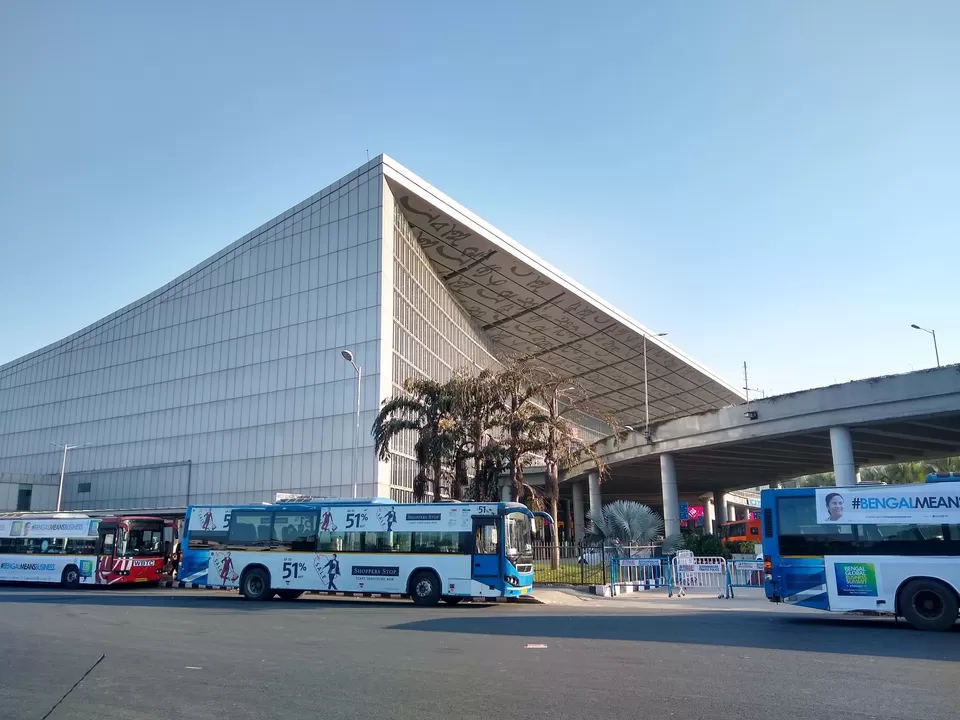








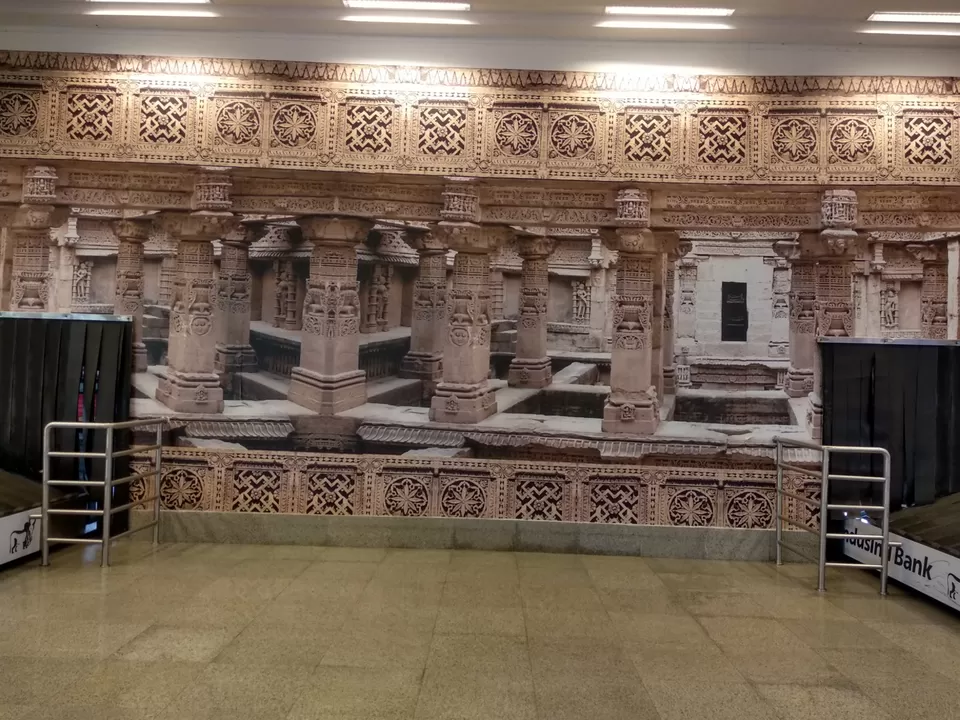
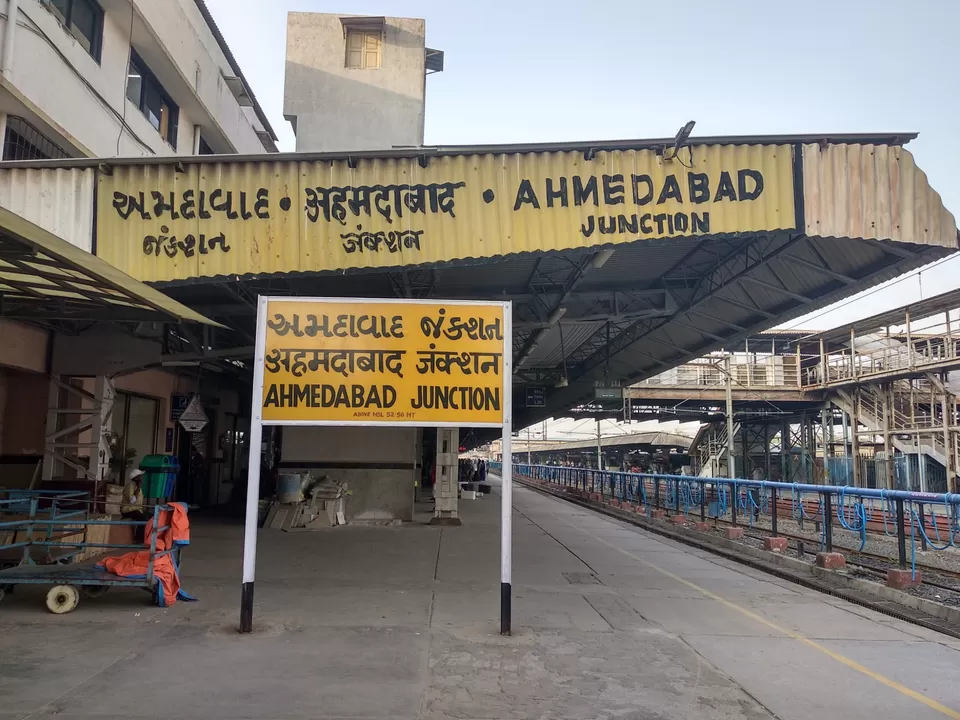
When I reached Jamnagar, I headed straight for the 'Reliance Greens' Campus at Motikhavdi, Jamnagar. This campus is strictly for the employees of Reliance Petrochemicals, situated nearby and their families to reside in. They have strict security over here and you need to have an acquaintance here, in order to get in. I had an acquaintance here too, so I could get access to here.
It is a beautiful campus for the Reliance employees and their families to reside in. This campus has a 750 acres of land, bounded on all sides and securely protected. As the name suggests, Reliance Greens is really green, provided with a number of lush green parks, cleanest roads, a few shops for groceries and other items in a complex known as the Green Arcade, Restaurants, a Reliance Shopping Mall, Reliance Mart, a school for children along with coaching classes for extracurriculars like Chess, Abacus etc. They also have two centres here, which are named as Dhirubhai Ambani Learning Centre (DHA), which has facilities of gym, swimming pool, library, open air theatre and a Stadium for cricket and soccer training along with professional coaches. They also have a big ground, known as the Oval Ground, where all the Reliance employees and their families celebrate cultural events like New Year, Holi, Nav Ratri, Diwali, Christmas etc., together.
I was lucky enough to visit Reliance Greens during the time of Nav Ratri and I can tell you, that it was a mesmerizing experience. The appartments in Reliance Greens have been divided into several sectors, with each apartment having a specific number. There are several Reliance buses plying between Reliance Greens and Jamnagar, for the ease of transportation of the Reliance employees and the rates are quite cheap (Rs. 10.00)
To cut a long story short, Reliance Greens is a 750 acres plot, where the Reliance employees and their families reside together as one big family and which is so good, that even the employees call it a "Golden Cage".













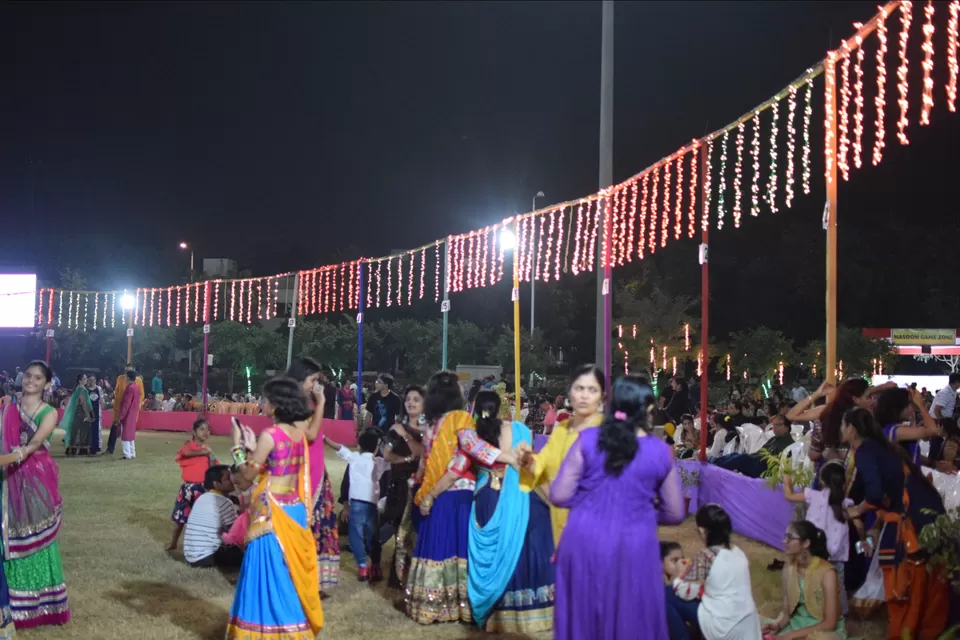
The city of Dwarka in Gujarat is about a couple of hours of drive away from Reliance Greens. Dwarka is a city on the western coast of INDIA, by the Arabian Sea and is one of the major pilgrimage sites in INDIA for the Hindus. Pilgrims from all over the nation pay a visit here and express their devotion.
The Mahabharata is a religious text of the Hindus, which mentions Dwarka to be the place, where Krishna, the Hindu deity settled after defeating his uncle, Kansa at Mathura. Although, the real Dwarka is now under the Arabian Sea. Hence, Dwarka is a place of religious importance for the Hindus.
You can come here to visit the Bhadkeshwar Mahadev Temple, which is a temple of Lord Shiva , on the top of a large rock in the Arabian Sea. It is connected to the mainland by a strip of land, which has now been reconstructed with concrete.
The 'Dwarkadhish Temple' is a mandatory place to visit, if you are at Dwarka. Legend has it, that this iconic temple was built by Vajranabh, the great grandson of Krishna and archaeological findings suggest it to be over 2000 years old. It has a beautiful architecture of both Nagara and Solanki styles and is a visual treat for the eye. They have a very tight security at the Dwarkadhish Temple and you are not allowed to click any photos over here.
The Sunset point at Dwarka and the Dwarka beach isn't too far away from the Dwarkadhish Temple and you can spend so e quality time with your family over here. The Sunset is worth watching from here.
The Gomti Ghats, at the banks of river Gomti are also a pilgrimage site over here. There is a 'Sudama Setu' which is a bridge connecting the two banks of river Gomti and is similar to the Laxman Jhula at Haridwar.













It takes 5 hours to reach Somnath from Reliance Greens by car, if you are driving at an average speed. We took the route through Junagadh, which is again a site to visit. You can see, the Girnar hills, while passing through Junagadh and at the foot of these hills is the Gir Forest which is famous for it's reserve of Asiatic Lions. Although, we couldn't pay Junagadh a visit, due to the time constraints, but we still managed to get a few clicks of Girnar Hills.
We reached Somnath in the evening and we freshened up a bit. We, then set out to pay the famous Somnath Temple a visit. Somnath also has critical importance for the Hindu pilgrims. There are 12 'Jyotirlingas' all over INDIA and Somnath happens to be the first among all of them. "Jyoti" means light and Lord Shiva, a Hindu deity was seen as a column of light or thunder, here and hence the name "Jyotirlinga". Nobody really knows when the actual and first Somnath Temple was built, but the second temple was built around 649 CE. Over a period of several decades, The Somnath was plundered, looted, it's idols destroyed by invaders, as many as 14 times and after every such incident, The Somnath Temple was reconstructed again. The invaders included Mahmud of Ghazni, Alauddin Khilji, Nawab of Gujarat, Portuguese and lastly by Aurangzeb in 1665. People here idolize Veer Hamirji, who was a warrior, who sacrificed his own life for the protection of the Somnath Temple, from the hands of the invaders. There is a statue built near the Somnath Temple, in his honour.
Junagadh and Somnath have a history of their own. During the partition of INDIA, the ruler of Junagadh, Muhammad Muhabat Khanji III had signed the instrument of accession of Jungadh to Pakistan in August 1947, even though the region had a Hindu majority. After a few months of diplomacy, Junagadh was finally acceded to INDIA. On that very day, Sardar Vallabhai Patel, the first Home Minister of INDIA made a proclamation to reconstruct the Somnath Temple, brick by brick.
The Somnath Temple that you see today was inaugurated in 1951, by the first president of INDIA, Dr. Rajendra Prasad, who has rightly said "The Somnath temple signifies that the power of reconstruction is always greater than the power of destruction." This temple has been built in Chalukyan style and it is an architectural marvel. We were lucky enough to have visited Somnath during the time of "Aarti" and it is worth watching. However, the place has a Z+ security level and you are not allowed to have any electronic devices with you, so you are not allowed to click any photos, within the premises of the temple.
There is a light and sound show, held every evening within the premises, dubbed in the voice of the popular INDIAN actor, Mr. Amitabh Bachchan and you simply cannot afford to miss it, but these shows are suspended during the monsoons, so better choose for any other season to visit Somnath. This show tells you about the religious and historical importance of the Somnath Temple.
The location of the Somnath Temple is indeed very beautiful. It is at the tip of the western coast of INDIA, where the waves of the Arabian Sea, come crashing down against the high walls of the Temple.
The Triveni Sangam at Somnath, which is the point of confluence of three rivers, Hiran, Kapila and Saraswati. Legend has it, that this is where Lord Krishna breathed his last in human form, according to Mahabharata. There is also the Somnath Beach, which you can visit.
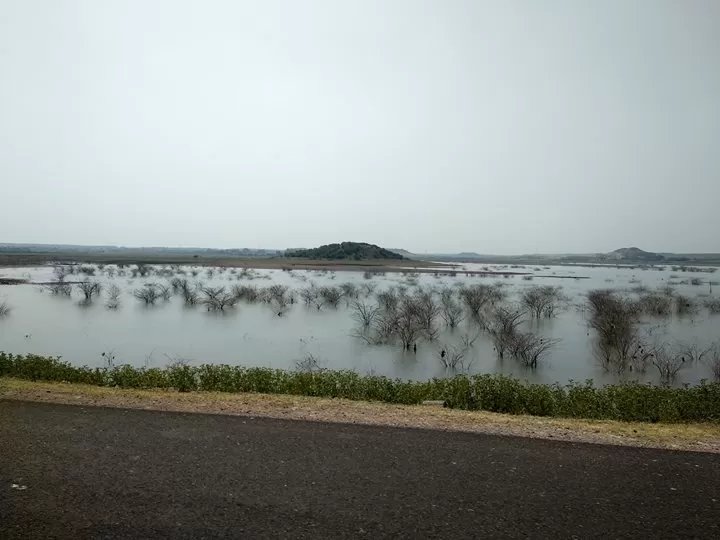









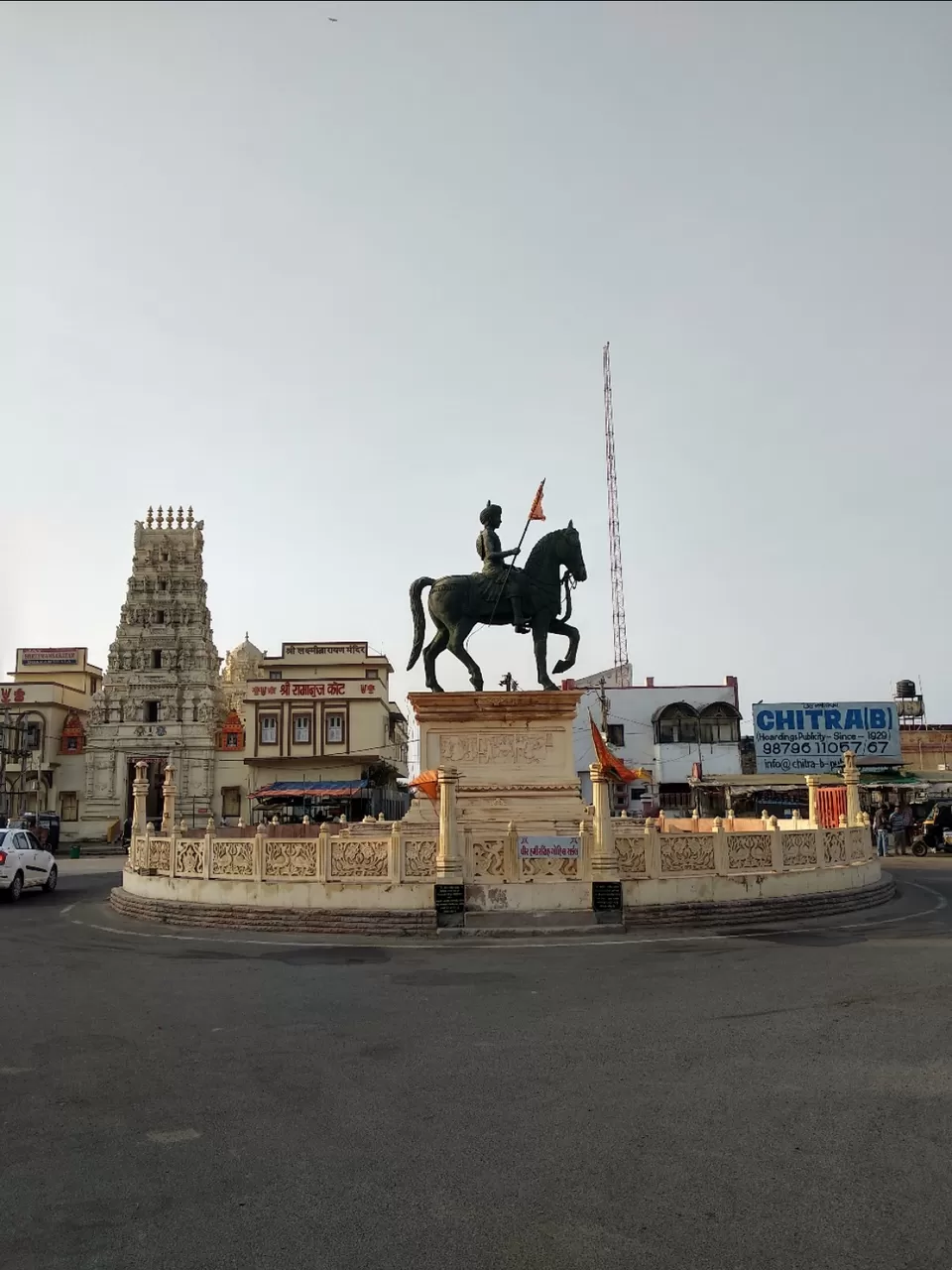

I was present at Reliance Greens, which is within the Jamnagar district itself, so, I thought of seeing around Jamnagar city for a day. The Jamnagar city is well connected to Reliance Greens, so I took a Reliance bus from Reliance Greens, which dropped me off to Church Gate. I then took an auto to Pratap Vilas Palace which charged me around Rs 25.
The auto dropped me off to the Pratap Vilas Palace, which was built during the rule of Jam Ranjit Singh Ji. It has a beautiful architecture, which is a combination of both INDIAN and European architectures. However, this palace is not open for public display and it is a private property. You can just have a look at the palace from the outside.
I then took another auto to Lakhota Lake, which charged me around Rs 30. It is indeed the "City Pride", which is the Lakhota Palace, turned musuem,situated approximately at the centre of the Lakhota Lake. The whole lake is encircled and you can take a walk around the entire periphery of the lake and have a look at several souvenirs kept there like the cannon, INS VALSURA. There is also the CITY MUSEUM, Aquarium and a section where a few birds like EMU were kept; all within the same premises.
There is a long walkway through the Lakhota Lake that leads to the Lakhota Palace, which is now maintained as a museuem. The walkway opens only after 2 pm. You can see artefacts and pottery from the 9th to the 18th Century. It was built on the orders of Ranmalji. You can also see a Whale Skeleton, some paintings, cannons and the view from the top is indeed very beautiful. The ducks swimming around and the kingfishers looking for their prey indeed gives you a taste of nature. You can also see the "Derani-Jethani Mahal" in the Lakhota Lake. It is worth mentioning that photography is not allowed in the interiors of the Lakhota Palace. You can also attend a Light and Sound Show, which is held in the evening.
The "Bhujiyo Kotho", situated in the south of the lake was once an arsenal and a historical landmark, but unfortunately it was closed down for public display after an earthquake. You can also visit the "Khambaliya Gate", built in the 17 th Century by Wazir Meraman Khawa.


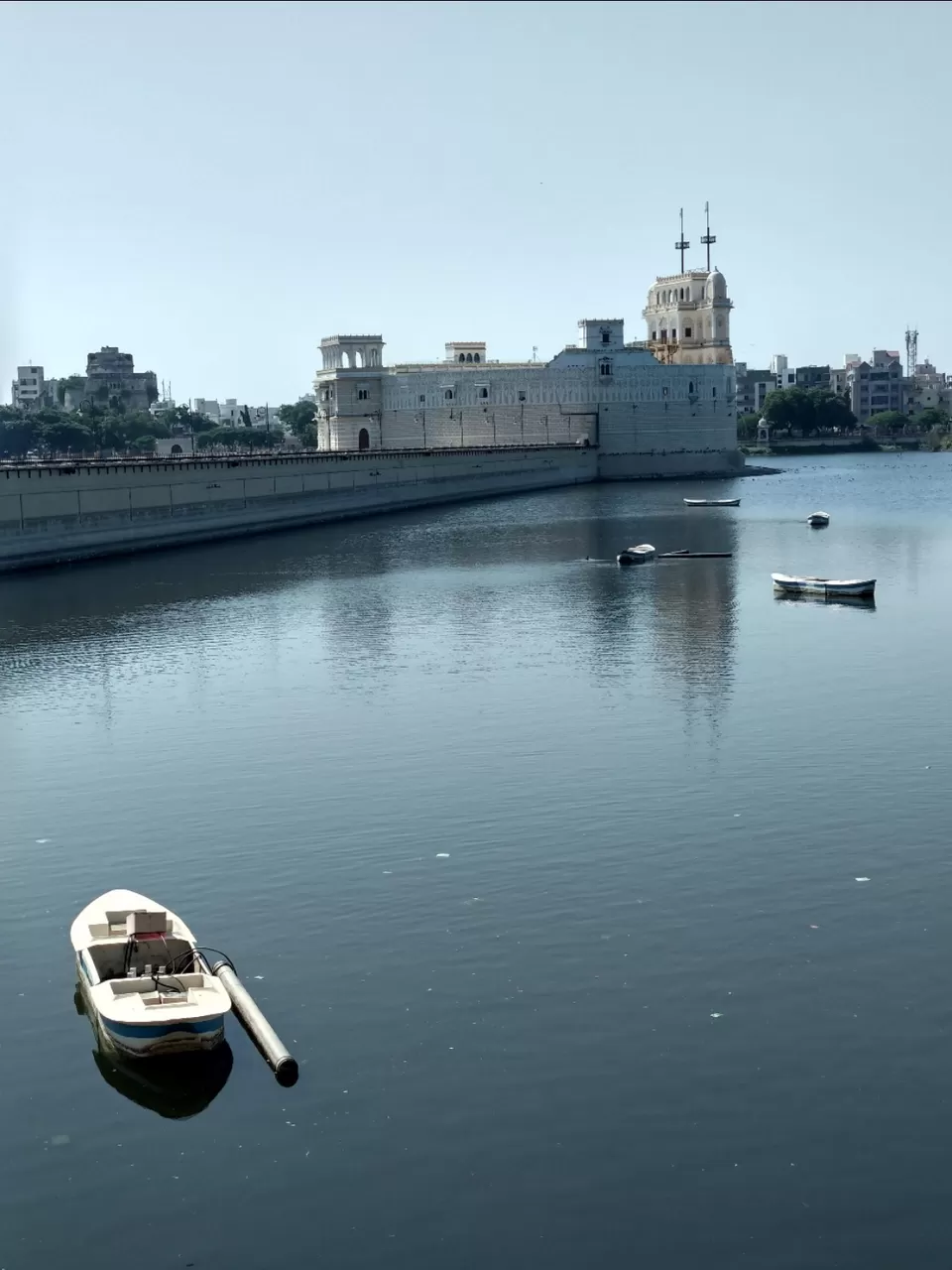








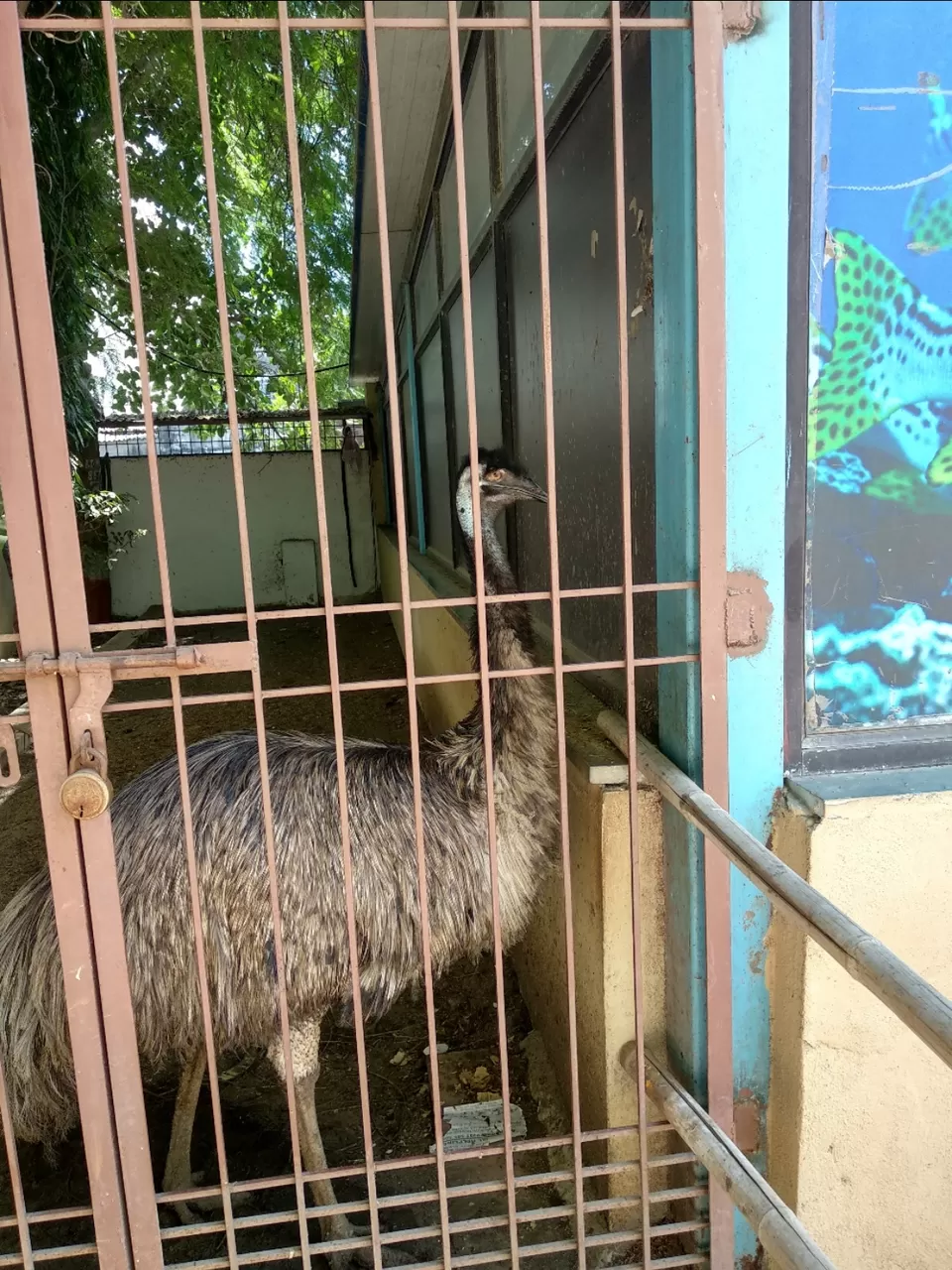
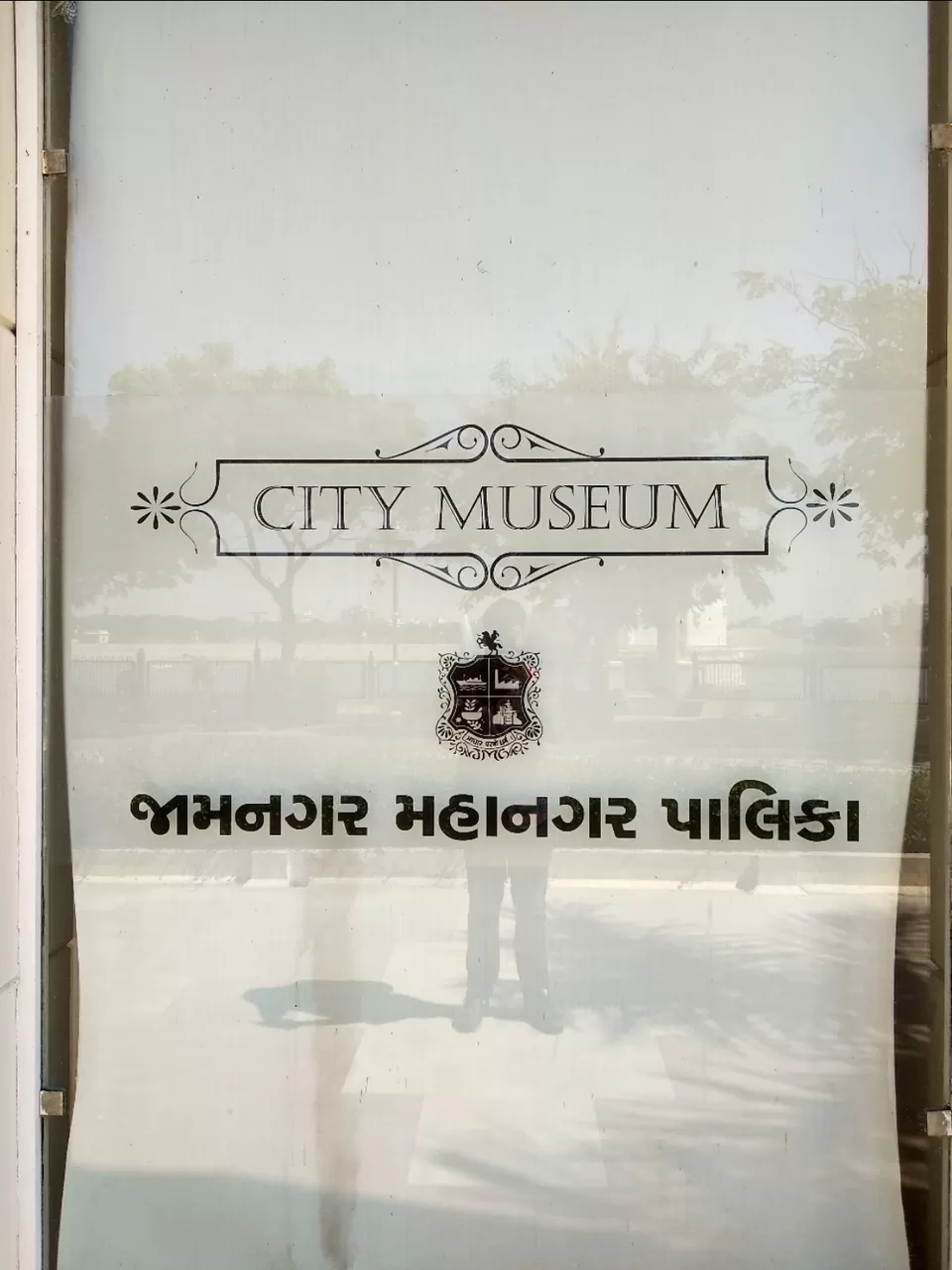
















It takes about 40 minutes of driving to get to Narara Marine National Park, Jamnagar. Unfortunately, Narara is not well connected to Jamnagar city or Reliance Greens, so you have to arrange a car for yourself.
Narara is actually a natural reef, which is the habitat for various acquatic life forms. Narara has got the status of INDIA's first ever Marine National Park. It is an absolute treat for you, if you are a nature lover and if you have come to Jamnagar, you shouldn't miss it at all, or else you will regret it later.
The best time to visit Narara is in the early morning, around 06:00 am, when the first low tide of the day sets in. The visitors are not allowed during the high tide hours, so you should collect the necessary information about the timings for the low tides. In the early morning, the temperature range is cooler in comparison to the rest of the day, so a lot of acquatic creatures come out in the open in search for their prey and hence, you can be able to spot almost all acquatic life forms over there, in the early morning.
While entering, you will be able to see a few water bodies and with swans paddling around in them and indeed, it's a beautiful sight. Before entering into the reef you will be charged seperately for entry fees and photography charges. Guides are available here too and although it is not mandatory for you to hire a guide, but I will personally suggest you to hire a guide and only then, you can enjoy the true essence of Narara. So, you need to carry a substantial amount of money with you.
The first thing that you will see, is the vast expanse of mangroves over here. The mangroves have a typical characteristic that their roots are seen above the ground and it is due to this, that it provides large amounts of dissolved oxygen to the waters. They also keep the waters cool and thus, create a suitable habitat for the acquatic animals over here. You can see the Friddler crabs and crabs of other species moving around, but if you go any closer, they will move into the ground.
You can see beautiful patterns in the sand, created by the snails moving around. You will find the waters to be very clean and crystal clear, all thanks to the Live Sea Sponges. You should make sure that you donot walk bare foot, at any point of time, because you may risk putting your bare feet on sharp rocks or any other animals, so it's best that you wear shoes, which minimises your chances of slipping. You should be mentally prepared for walking through knee-deep waters for about 3 kms or so. Do use your electronic gadgets cautiously, because you might risk them falling into the salty waters, so it's best that you take waterproof coverings for your cell phones, before coming here.
You can see both live and dead corals over here, the sea weeds, Sea Animon ( an acquatic flower), Friddler crabs, prawns, wolf crabs, white crabs and a few other species of crabs, live and dead sea sponges, sea cucumber, Sea Weed,Oyesters, Octopus, shrimps,species of Starfish, Puffer Fish and many other life forms. We had also seen the membranes of a dead Jellyfish. The Puffer Fish is so named because it puffs up like a baloon by intaking water to scare off it's enemies. It can also throw out the water in the enemy's face like a powerful jet of water. The "Puffer Fish" is also known as "Dhongi Machli" in Gujarati language, because it pretends to die when caught by an enemy to invoke the enemy's sympathy.
We were also lucky enough to witness the "camouflage" of an Octopus.
Narara is my personal favourite and you should visit it.












